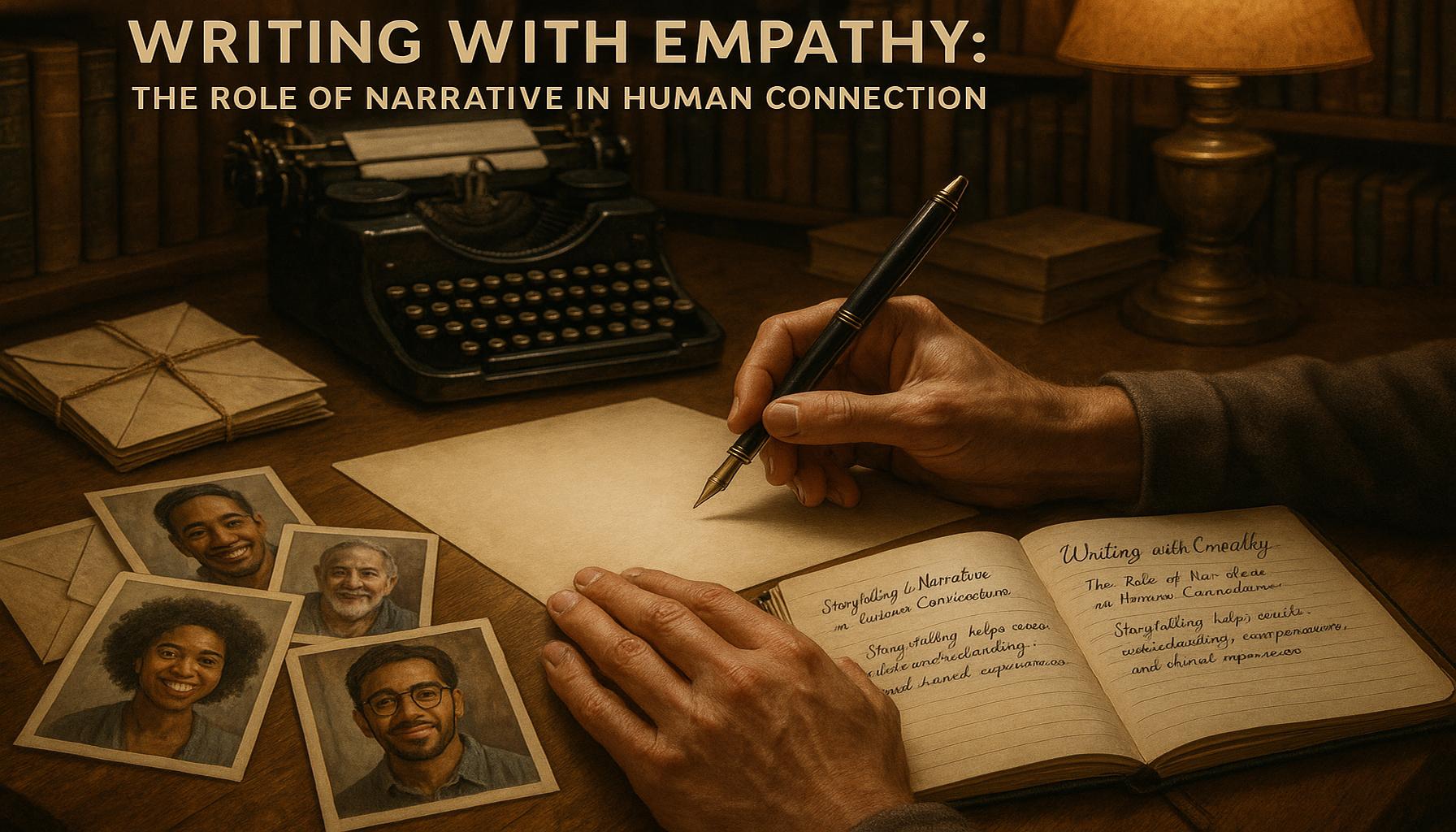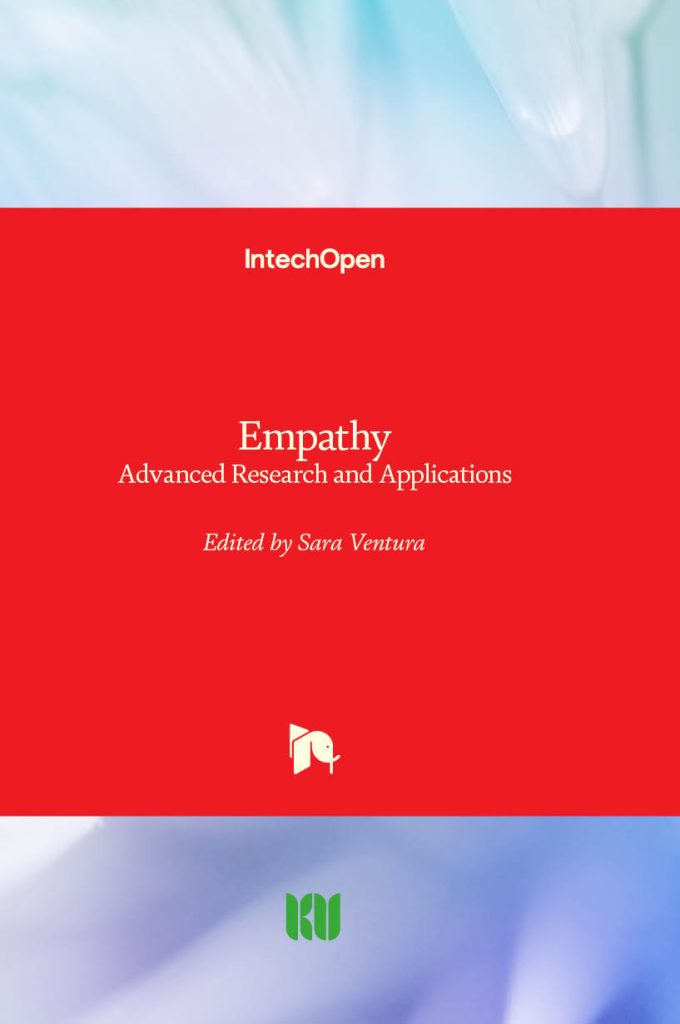Writing with Empathy: The Role of Narrative in Human Connection

The Importance of Empathetic Storytelling
In today’s fast-paced world, where information overload often leads to disconnection, storytelling emerges as a powerful remedy. It allows individuals to connect with one another on a deeply personal level, fostering understanding through shared narratives. Writing with empathy not only bridges gaps but also amplifies human experiences in a relatable manner.
When crafting narratives, there are several key elements essential for creating an emotional resonance that fosters empathy among readers:
- Character Depth: Well-developed characters are essential in storytelling. Readers are more likely to engage with narratives that feature characters they can see themselves in. For example, in J.K. Rowling’s “Harry Potter” series, readers of all ages relate to the various struggles faced by Harry, Hermione, and Ron, such as friendship, belonging, and facing adversity. This creates a powerful connection that transcends the page.
- Authentic Emotion: Evoking authentic feelings is crucial in empathetic writing. When authors express genuine emotions, whether joy, sorrow, or frustration, it resonates with the audience on a fundamental human level. A prime illustration is found in John Green’s “The Fault in Our Stars,” where readers are emotionally moved by the pain and triumph of its protagonists, Hazel and Gus, who face terminal illnesses. Their stories prompt readers to contemplate life’s fragility and beauty.
- Inclusive Perspectives: Expanding the narrative to include diverse viewpoints cultivates a broader understanding of various societal issues. Chimamanda Ngozi Adichie’s concept of “the danger of a single story” highlights the importance of multiple narratives in fostering understanding. By portraying different experiences, writers enable readers to step outside their own perspectives and engage with various cultures and identities.
Moreover, in an age dominated by social media, empathetic storytelling takes on renewed significance. As digital interactions often lack the nuances of face-to-face discussions, written empathy acts as a counterbalance, reminding us of our interconnected humanity. Platforms like Twitter and Instagram can be leveraged for storytelling that promotes empathy, using personal stories and shared experiences to spark conversations around crucial social issues. These platforms have the potential to galvanize communities, inspiring action and motivating change.
Ultimately, the role of narrative in enhancing emotional bonds cannot be overstated. By embracing empathetic writing, we can transform how we communicate with one another, leading to richer interactions and deeper understandings. In revisiting storytelling techniques, we not only enrich our own narratives but also contribute to a collective tapestry of lived experiences that defines our society.
DISCOVER MORE: Click here to dive deeper

Elements of Empathetic Writing
To harness the power of storytelling in building human connections, writers must pay attention to several key elements that enhance empathetic engagement. Understanding these components not only enriches the narrative but also serves as a blueprint for authors aiming to create impactful stories that resonate with audiences.
First and foremost is the concept of character relatability. Characters in literature serve as vessels through which readers navigate various experiences and emotions. When a character faces challenges or triumphs that reflect the complexities of real life, it creates a bridge of connection. For example, in novels like “The Kite Runner” by Khaled Hosseini, the protagonist Amir undergoes a transformative journey that explores themes of guilt, redemption, and the lasting effects of childhood choices. Readers share in Amir’s heartbreak and growth, making his journey feel deeply personal. Recognizing oneself in a character can foster a profound sense of empathy and connection to diverse experiences.
- Realistic Dialogue: Authentic dialogue is crucial in revealing character depth and emotional nuance. When characters speak in a manner that reflects real-life conversations, readers are drawn into the narrative. Scripted dialogue that feels contrived can break the reader’s immersion, while genuine exchanges can evoke empathy and relate to daily human interactions.
- Emotional Authenticity: The emotional core of a narrative hinges on the exploration and expression of genuine feelings. Writers who can effectively convey vulnerability will resonate with readers. For instance, in “A Man Called Ove” by Fredrik Backman, the protagonist’s struggles with isolation and grief portray a realistically flawed yet relatable character, prompting readers to reflect on their own emotions and life experiences.
- Cultural Context: Integrating cultural backgrounds into storytelling enhances relatability and offers insights into diverse human experiences. In “The Joy Luck Club” by Amy Tan, multiple perspectives from Chinese-American women illustrate the interplay between culture and identity. This multifaceted portrayal offers readers a window into familial bonds, cultural differences, and the quest for belonging, fostering empathy through understanding.
Furthermore, narrative pacing plays a pivotal role in empathetic writing. A well-paced narrative allows readers to absorb emotional weight, making it easier to connect with the characters’ experiences. Writers can skillfully manipulate time within a story to emphasize moments of tension, joy, or sorrow, creating a rhythm that mirrors the ebb and flow of human emotion. This pacing invites contemplation and reflection, encouraging readers to engage more deeply with the material.
Lastly, in the digital age, the impact of visual storytelling cannot be overlooked. Platforms such as blogs and social media provide opportunities for writers to incorporate multimedia elements, allowing the audience to experience narratives in varying formats—text, video, and images. Such combinations have proven effective in communicating complex emotions and facilitating empathy among diverse audience members, ultimately leading to meaningful dialogues around societal issues.
By focusing on these critical elements, writers can develop narratives that not only entertain but also cultivate a deeper understanding of the human experience. In doing so, storytelling becomes a vital tool for empathy, opening doors to dialogues that challenge perceptions and foster connection in an often fragmented world.
| Category | Description |
|---|---|
| Empathetic Narrative | A writing style that enables readers to feel and understand the emotions of characters. |
| Building Connections | Narratives create a bond between authors and readers, fostering a shared human experience. |
| Cultural Insights | Storytelling often illuminates diverse perspectives, broadening understanding across cultures. |
| Healing Through Stories | Personal narratives can aid in healing by sharing vulnerabilities and experiences. |
The role of narrative in human connection cannot be overstated. When writers adopt a empathetic narrative approach, they empower their readers to engage with the text on a deeper emotional level. This connection often leads to a profound understanding of both self and others, as narratives invite readers into the complexities of human emotions. Moreover, stories that reflect cultural insights promote empathy by showcasing diverse human experiences. This not only enriches a reader’s perspective but also highlights shared values across different backgrounds. By delving into these narratives, readers can acquire a wealth of knowledge that fosters social cohesion.Furthermore, narratives serve as a powerful tool for healing. Writers often use personal accounts to convey vulnerabilities, providing solace to those who may have faced similar challenges. This exchange of stories can catalyze authentic connections, binding individuals through common struggles and triumphs. As we explore the intricacies of narrative writing, we uncover the potential for fostering empathy and nurturing human connection, revealing the essential role storytelling plays in our collective experience.
DIVE DEEPER: Click here to uncover the art of street photography
Narrative Techniques that Foster Empathy
Beyond the fundamental elements of empathetic writing, specific narrative techniques can significantly influence a writer’s ability to connect with readers on a deeper, emotional level. Mastering these techniques allows authors to draw audiences into the experiences of characters, eliciting feelings that transcend barriers of culture, geography, and personal experience.
One noteworthy technique is the use of multiple perspectives. By presenting a story through the eyes of different characters, writers provide readers with a comprehensive understanding of the intricacies of human relationships and social dynamics. For instance, in “The Help” by Kathryn Stockett, the story unfolds through the viewpoints of several women—both black maids and their white employers—thereby illuminating the racial tensions and personal struggles during the civil rights era in the American South. This multidimensional approach fosters empathy by allowing readers to grapple with diverse experiences and judgments, prompting them to reflect on their own biases and beliefs.
Another powerful narrative device is stream-of-consciousness writing, which captures characters’ internal monologues in real time. This technique immerses readers in the characters’ thoughts, emotions, and conflicts, enhancing emotional resonance. James Joyce’s “Ulysses” and Virginia Woolf’s “Mrs. Dalloway” exemplify this technique, allowing audiences to experience the intricate tapestry of human existence. In this style, empathetic engagement becomes an organic response as readers discover feelings often buried beneath the surface.
- Symbolism and Metaphor: Utilizing symbolism and metaphor can encapsulate complex emotions and profound truths in a digestible manner. In “The Great Gatsby” by F. Scott Fitzgerald, the green light symbolizes Gatsby’s hope and the American Dream, evoking feelings of yearning and disillusionment for generations of readers. Such symbols foster a greater understanding of shared human desires and disappointments, enabling readers to connect more profoundly with the story.
- Flashbacks and Nonlinear Narratives: Incorporating flashbacks adds layers of depth to a character’s backstory, allowing audiences to comprehend their motivations and struggles fully. For instance, in “Beloved” by Toni Morrison, the nonlinear narrative structure invites readers to piece together the fragmented memories of a former enslaved woman, revealing the haunting impacts of trauma and loss. This approach cultivates empathy by offering insight into how past experiences shape present identities.
Moreover, the emotional impact of imagery should not be underestimated. Vivid and evocative descriptions can transform words into powerful visuals that resonate with readers’ senses. This sensory engagement can elicit emotional responses that may otherwise remain dormant. For example, the detailed depictions of the desolate landscape in “The Road” by Cormac McCarthy evoke feelings of despair and loss, immersing readers in the protagonist’s dire reality. Such imagery draws readers not just into the physical world of the narrative but into the emotional landscape of the characters.
Lastly, incorporating real-life experiences and research can add authenticity and relatability to a narrative. By weaving factual elements into fiction—whether it’s a shared historical event or a scientific perspective—authors bridge the gap between reality and imagination, allowing readers to engage with the narrative on a personal level. This strategy is apparent in works like “The Immortal Life of Henrietta Lacks” by Rebecca Skloot, where the blend of biography, science, and ethics invites readers to reflect on the moral complexities of using human lives for research.
By employing these narrative techniques, writers can unlock new dimensions of empathy, creating narratives that not only compel but also provoke introspection and understanding. This meticulous crafting of stories ultimately lays the groundwork for connections that are vital for a rich and compassionate human experience.
DISCOVER MORE: Click here to dive into photography techniques
Conclusion
In a world increasingly marked by division and misunderstanding, the art of writing with empathy emerges as a vital tool in fostering genuine human connection. Through the skillful use of various narrative techniques, writers can break down barriers, bridge differences, and evoke shared emotions among readers. The power of storytelling lies not only in the plots we construct but also in our ability to convey the diverse experiences that shape our world.
By embracing methods such as multiple perspectives, stream-of-consciousness writing, and rich imagery, authors invite readers to explore the depths of their characters’ truths, ultimately leading to a collective understanding of empathy. The stories we share—as seen in classics such as “The Great Gatsby” or contemporary works like “Beloved”—resonate deeply because they reflect our universal struggles and aspirations.
Moreover, integrating real-life experiences into narratives enhances authenticity, allowing readers to connect with themes that matter in their lives. As we turn the pages of empathetic writing, we not only witness the arcs of fictional characters but also discover reflections of our own humanity. In a society that often glorifies individualism, it is through these poignant narratives that we can cultivate compassion and solidarity among one another, reminding us that at our core, we are all part of the same human tapestry.
As readers and writers, let us celebrate the role of narrative in shaping our connections. By choosing to write and read with empathy, we have the opportunity to enrich our understanding of each other’s experiences, building bridges that foster both dialogue and connection across all facets of life.



